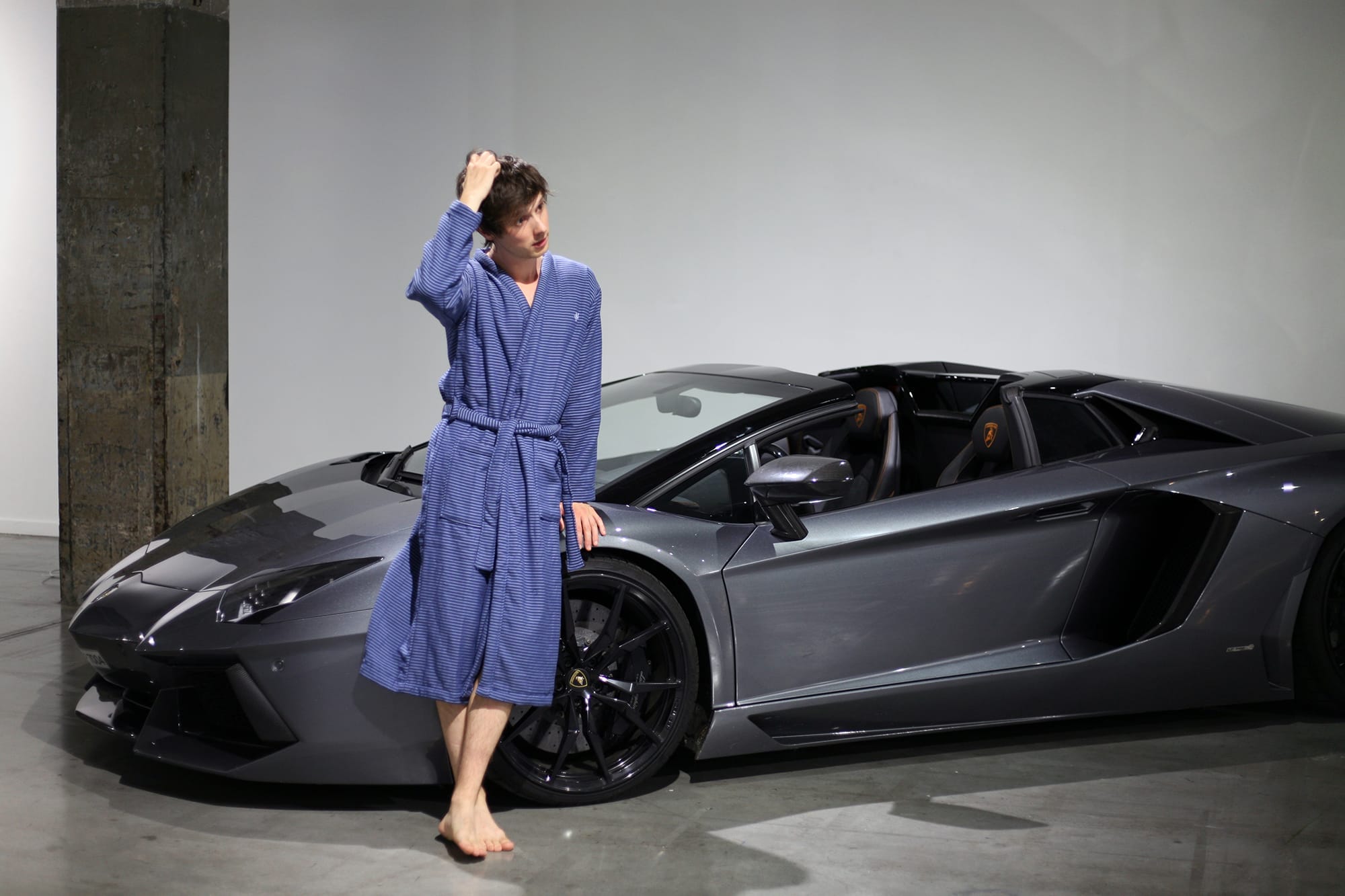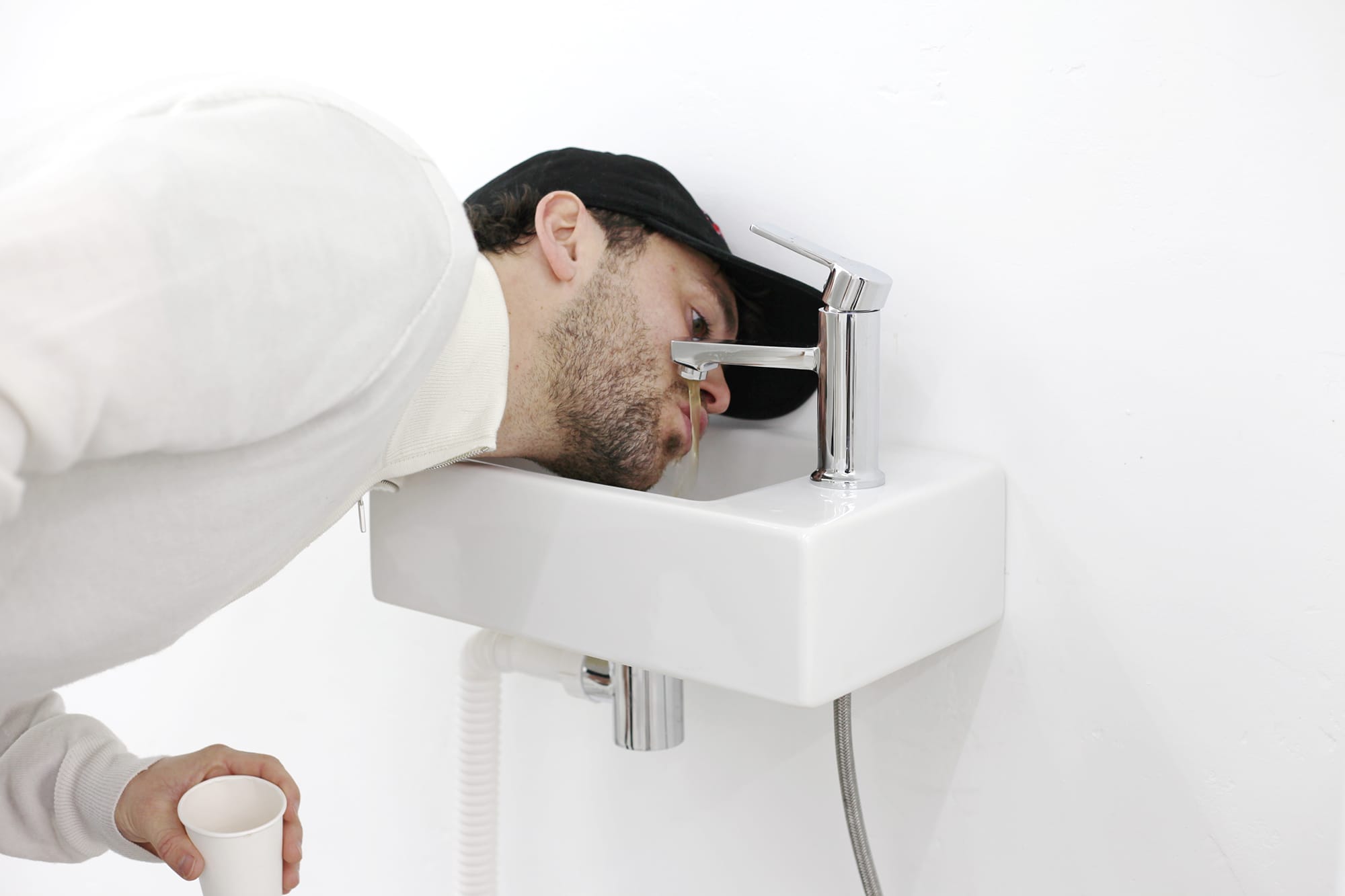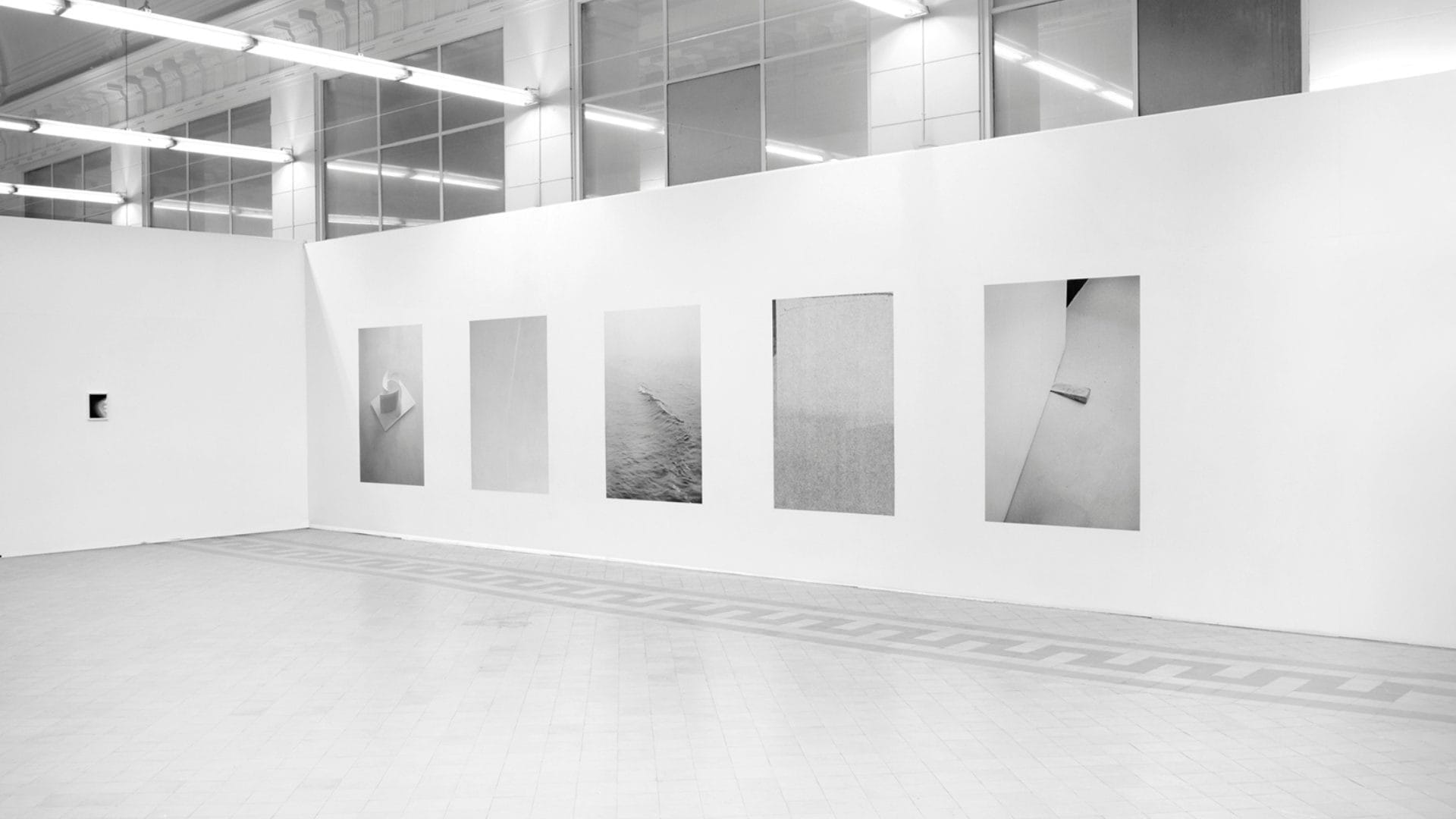
In Dialogue with Fakewhale: Aaron McLaughlin on Challenging Systems and Shaping New Relations
Aaron McLaughlin is an artist and curator whose practice systematically challenges established structures, critically examining institutional and cultural mechanisms through works that span sculpture, performance, installation, and socially engaged practices. His work stands out for its ability to translate complex concepts into participatory frameworks that demand the active involvement of the audience, generating new forms of connection and meaning. At FakeWhale, we had the privilege of exploring with him the foundations of his interdisciplinary approach, his critical reflections on accessibility, and the evolution of his artistic and curatorial strategies in response to the shifts of contemporary society.
Fakewhale: Good morning, Aaron. Thank you for accepting this interview. To start, we’d like to ask: how did you begin your artistic journey, and what led you to develop an interdisciplinary approach?
I studied Communication Design at Glasgow School of Art. At GSA, I was auto-tuning birdsongs and ran a cassette label from the illustration department. After graduating, I freelanced as a graphic designer, and applied simultaneously to the Dirty Art Department and for an internship at HORT Berlin. HORT said work and then no; the Dirty Art Department said yes.
I started the masters program the following year, spending a few months sleeping in the school building and then living in a squat without water or electricity for a year. In retrospect I would say my background until this point had been generally interdisciplinary. The Dirty Art Department is an unconventional program that has also no doubt informed my current approach. I would say though that since graduating I have been steadily refining my ideas and artistic practice to be less complex, and more accessible to a broader public.
Accessibility is a central theme in your artistic practice. Could you explain how you explore this concept both conceptually in your works and practically through community projects?
I map out rules for a certain medium and context to be performed by institutional agents and the public. Pieces vary in scale and complexity, incorporating sculpture, film, performance, installation, and collaborative and curatorial practices. Within institutions, I deploy different agreements including contracts, handshakes and digital correspondences. In terms of community projects, I am working with socially-engaged mechanisms, to platform a certain demographic and challenge entrenched infrastructures within and beyond the art world. As an example, Ellipsis (…) was an autonomous art space, initiated through an open call for group exhibitions, giving preference to inexperienced artists. As a means to avoid gatekeepers, the proposed artworks were not judged; all proposals that met the criteria were accepted. While this project could be seen as curatorial, I view it as a generative sculpture as it is socially dependent: it questions what limits are placed on who is accepted as an artist and what paratexts contextualise their work, as well as creates further opportunities for direct audience participation, or something.

How does the idea of “mapping rules” for a specific medium and context influence the creative process of your works?
It is more in terms of mechanics. Defined mechanics create certain outcomes; rules would be the parameters of the mechanical function of the work. Ellipsis (…) had certain rules for a mechanical application: to engage a certain demographic that do not disputably align with the current creative hierarchy in Amsterdam, and platform them. All works from small sculptures to gallery spaces usually follow this same process.
With the project “Ellipsis (…)”, you created an autonomous art space prioritising inexperienced artists. What were the main goals of this project, and what impact did it have on the local artistic community?
This was already addressed above.
Your piece “Creative Fidelity” from 2023 involves agreements such as contracts and digital correspondence. How do these performative elements help create interdependent relationships between the artist and the audience?
Each contact elaborates on a contractual relationship between the artist and the contract holder; the work, when activated, creates an interdependent relationship that persists beyond its presentation.

Your curatorial practice is closely tied to your artistic activity. How do you balance these two roles, and how do they influence each other?
I balance these two disciplines awkwardly and with mild anxiety, as delegating equal time to both practices is quite challenging. Still Making Art Volume Seven consumed the majority of my time in 2024, for example.
Curatorial projects in collaboration with institutions are sporadic, often clustering together, despite my aim of undertaking only one per year. That said, as I delve deeper into socially based work, I see my artistic and curatorial practices increasingly informing one another. Ellipsis (…) exemplifies this cohesion, as does my upcoming project Gen Alpha ‘Pataphysics.
With initiatives like “Still Making Art” and “Gallery Ellipsis (…),” what challenges have you faced in supporting emerging artists, and how do you see these platforms evolving in the future?
Still Making Art wiped me out this year, primarily due to not receiving funding for a project in central Amsterdam. Albeit this was a fair decision given the already affluent context of the show. Additionally, Still Making Art carries a slightly anti-institutional tone, which is reflected in the positive critique within my curatorial work—something that could understandably raise a funding body’s eyebrow. In light of the project’s name a greater challenge is a fidelity to undertaking each project, and leaving my finances in the toilet as a result.
I believe I’m now at a stage where these projects are reaching an organisational apex. Not only am I planning and executing everything myself, but I’m also undertaking the lengthy process of fundraising. Ideally, SMA will eventually be invited to institutions with an available project budget, which would be far better for both the project and my cardiovascular health. As a curatorial project that has been defined to be undertaken until I die, SMA and (…) will continue indefinitely, evolving over time with an already defined outcome after twenty years of production.
Unfortunately, Gallery Ellipsis (…) no longer exists. However, I intend to continue the project in other spaces, maintaining the same criteria through an open call, for which I’m currently waiting for invitations … … As always, these projects remain in my inventory, awaiting the right opportunity. For now, I’m focusing on my own artistic practice.


Your works often involve the community and rely on audience engagement. What role does active audience participation play in completing the work?
With most works (widely speaking), audience participation is required to activate a piece–the same for socially-engaged projects. Ellipsis (…) for example would simply be an empty gallery space if the open call didn’t adhere to a specific need or community. For my sculpture work, audience participation is usually necessary, as I seek to explore how a piece can develop in tandem with an audience member’s input. I am also interested in considering how these mechanisms can be used to engage a broader audience, particularly those who do not affiliate with or dare I say feel alienated by institutional art contexts.
In your work, you use agreements like contracts, handshakes, and digital correspondence as both performative and procedural elements. How do you view the role of these agreements within contemporary art, and how do they help create lasting relationships beyond the presentation of the work?
These elements are already active within contemporary art circles, yet they usually have a specific function. In the works I am developing, I aim to challenge and alter these functions to address the restrictions of predefined systems, such as the roles of an opening, a gallery, an invigilator, a spectator, etc etc.
You’ve described your practice as “post-conceptual,” with works that act as “notational scripts” at their core. Could you elaborate on what you mean by this term and how it manifests in your artistic creations?
There is not just an implicit idea; rather, there is an offered functionality that can only exist if activated correctly, usually by the work’s context or audience. In this sense, the work is performative, as it is altered by the different agents who perform its script in different scenarios. Most artworks undertake this role: the same work in different contexts can be offensive to some while embraced by others. With my own work, I purposely zoom in on this functionality and tamper with it.

Your piece “Colourless Green Ideas Sleep Furiously” explores the limitations of language and the devaluation of knowledge in contemporary society. How does this work reflect on the challenges of communication in art and culture today?
You could say that but the work is also intended to be a disturbing account of an artist torturing themselves in the pursuit of meaning, which I think speaks a lot to contemporary makers. In terms of language, the work was intended to be a speculative exercise that took the context of an interview–where success is measured by an artists’ ability to put their activities into words–as an opportunity to celebrate the ineffable quality of art making and the blurry place between sense and nonsense that I believe is inherent and vital to an art practice.
How do your personal experiences, such as living in precarious conditions and your socio-economic background, influence your perspective on accessibility in art and the themes you choose to address in your works?
I sort of feel like an infiltrator in the arts; I wasn’t really supposed to be active in this field. Living in Glasgow and initiating various publishing outlets, I come from a DIY background that shapes my thinking and approach for many of my current projects. Since I now like running water in the house and generally avoid animosity, I would describe this as a punk ethos in institutional clothing.
This is reflected in my focus on community building, with the long-term aim of giving something back to communities that are often overlooked in the arts. If we’re being honest the art world is generally stagnant and not respected by many pioneering creative practitioners. A spanner in the works in this case would be productive in terms of progress.
Looking to the future, what directions do you see your artistic practice taking, and what new conceptual or formal territories do you wish to explore?
I am currently undertaking a think tank with Generation Alpha. We are exploring certain public policies and reconsidering many implemented structures within our current world model.

fakewhale
Founded in 2021, Fakewhale advocates the digital art market's evolution. Viewing NFT technology as a container for art, and leveraging the expansive scope of digital culture, Fakewhale strives to shape a new ecosystem in which art and technology become the starting point, rather than the final destination.
You may also like
Viktor Frešo, “LAST 50” at Comma Gallery, Bratislava
“LAST 50” by Viktor Frešo, curated by Zuzana Danková, at Comma Gallery, Bratislava, 14
Fakewhale in dialogue with Michel Mazzoni
Michel Mazzoni’s artistic practice is an intricate exploration of photography as both a medium a
Fakewhale in dialogue with Markus Sworcik and René Stiegler
Markus Sworcik and René Stiegler, known collectively as StieglerSworcik, strive to translate the co




